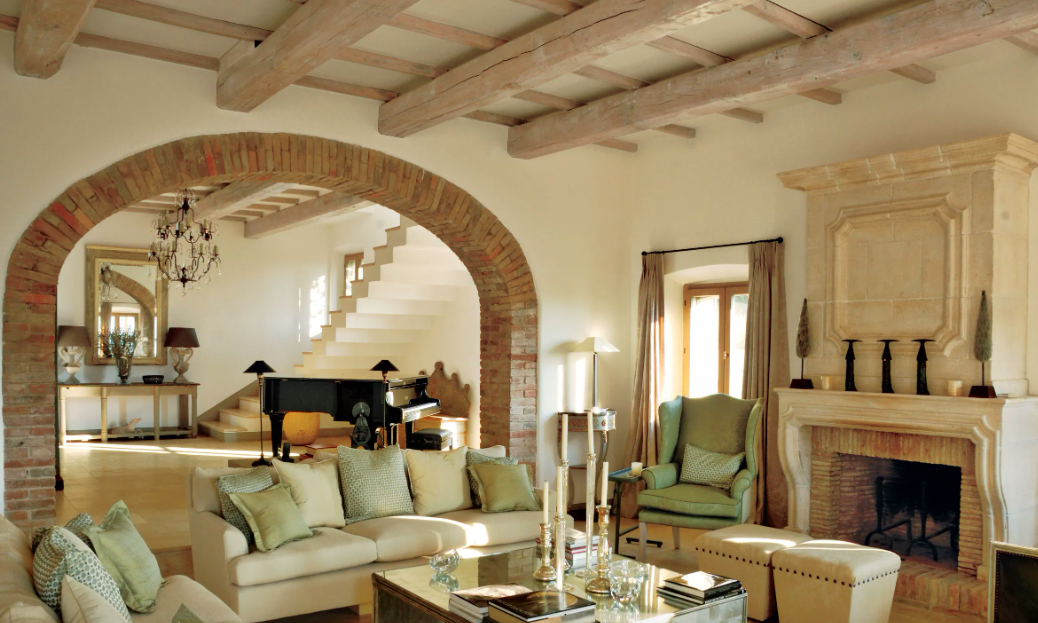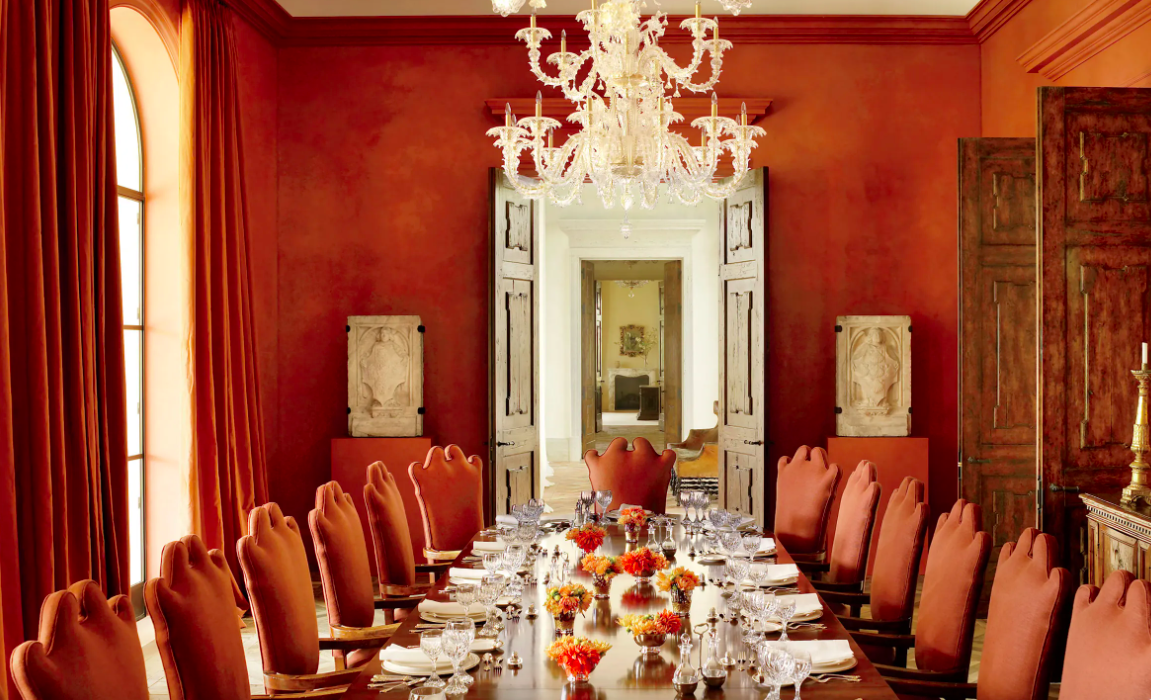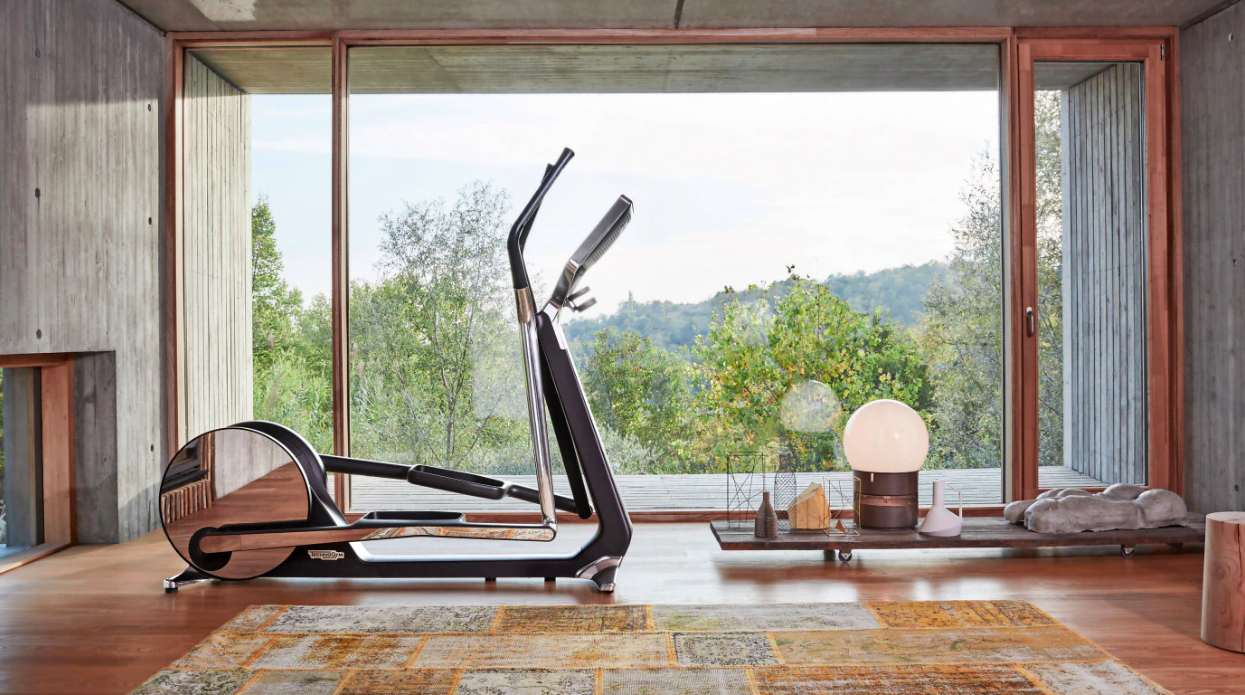
From colorful trends at your favorite local cafe, to the minimalist trends at the new bar downtown, interior design trends are hard to ignore. Whether you embrace interior design trends or not, they happen. Interior designer Brahman Perera sums it up, “I see trends as almost like a pendulum. Like with Newton’s law of motion, once the pendulum has too much weight behind it, it reverses back in the opposite direction. The important thing is to find the sweet spot or balance, without tipping over into something contrived or insincere. I think it’s true for anyone, whether they’re a client, a designer, or a person sourcing for their own home, to stay true to their own sensibilities and preferences.”
As we step away from the highly minimalist interior design trends that have dominated in recent years, we can expect a return to more elegant and traditional forms. And with climate change being front and center, many designers cite sustainable and locally made design as a major trend. Keep reading to hear the popular interior design trends happening this year, according to leading designer and architects.
Traditional

Wave bye-bye to minimalism. The return of traditional interiors has taken some time, but it’s finally here. “I’m seeing a lot more classic influences,” says interior designer Shona McElroy from Smac Studio, who sums up the vibe as “a very wealthy, jet-setting grandmother’s house.” Think: plush white sofas, oversized lamps, antique pieces and more traditional art. Dubbed grandmillinial style in 2021, the return to the past feeds into our thirst for unique and individual design within the home.
Marble

Though not much of a trend per se (marble never goes out of style), the use of marble isn’t set to come to an end any time soon. “It’s no surprise we love marble, but we’re obsessed with profiling it, which gives such a detailed finish,” says McElroy. “A nod to traditional European countertops, it takes off the sharp edges.”
Quality, not quantity

“We’re seeing more attention to detail and quality and an emphasis on capturing all of the senses in one moment,” adds Perera. “Fast furniture, like fast fashion, is thankfully becoming a thing of the past, with widespread appreciation of local makers and manufacturers creating wares that last multiple generations.” The inspiration rests on treasures you discover, rather than falling back to mass market retailers. “Regardless of budget, there are many ways to purchase quality pieces, whether it be through the second-hand market, sourcing burgeoning designers on social media, or hitting the pavement and perusing local showrooms and studios,” notes Perera.
Life-enhancing design

“The last few years have taught us so much about how we experience the world through design,” says Emma Mahlook, creative director of Mim Design. “It’s safe to say we value our homes more than [ever], and this will see an increased focus on life-enhancing design.” Whether it’s more spaces for leisure and quiet time, or more productive home office environments, Mahlook believes “the pandemic has given us a greater understanding of our needs and our homes will need to work harder as a result.”
Paul Conrad, director of Conrad Architects agrees. “The idea of home as a haven has been elevated over the last few years and it’s likely this sentiment will continue. Following recent times, our relationship to home has a far greater sense of value and is an important foundation in shaping our lifestyle. More so than ever, the true value of interior design is demonstrated in how it can evoke a sense of tranquility, warmth and comfort.”
Eclecticism

Eclecticism is nearly a reaction to the modern and minimalist homes that have been popular for the past decade. “[I’m seeing] a move towards artisanal detailing in all aspects, and perhaps a more eclectic approach to interiors,” says Perera. The designer defines eclecticism less intems of the design style, and more as an approach. “Eclecticism, for lack of a better word, can simply represent a pastiche of one’s own personal items that have inherent meaning to the individual, but thematically may not all fall under the one category of ‘mid-century modern’ or ‘contemporary’,” says Perera.
The way we combine pieces is set to change. “It’s important to be true to yourself, and not fall into the schematic trap of having an entire space all adhering to one trend or style,” says Perera. “Rather, play around, experiment with antique timbers and powder-coated metals, take a Curule chair and place it next to a Bourellec Brothers sofa.”
McElroy also likes the idea, calling it a “style mix up.” It’s about “throwing out the rule book and finding inspiration from far and wide.” Be unafraid of combining design styles and periods, and instead focus on the details that will tie each piece together, she suggests.
European holiday

Even if you didn’t go to Italy recently, you can still bring the vacay vibes to the home. “International influence will be back with a vengeance,” says Alex Hopkins, design director at Studio Tate. “More and more we will see inspiration coming from long awaited European adventures – think: crisp red and white checked tablecloths from the Italian trattoria as inspiration for poolside upholsteries, and the glow of an orange Aperol sprits informing the direction for the disco powder room by the bay.”
Home wellness

“In 2023, there will be a greater shift towards mindfulness and how we can incorporate this into our lives through our homes and spaces that we inhabit. As more noise and stress builds in the outside world it’s important that our internal environments stimulate a sense of calm, timelessness and stillness,” says Daniel Boddam, founder and director at Daniel Boddam Studio. “Daily rituals and practices will be amplified through design into our environments.”
Designers are also seeing an increased focus on physical wellness spaces within the home, as well. “Many of our clients are now dedicating not just rooms, but entire wings of their homes to make way for amenities and highly detailed, hotel-like facilities,” adds Conrad. Frequent requests include everything from hot and cold plunge pools, spas, steam rooms and infrared saunas, to stretching spaces, fully equipped gyms, and meditation spaces. Founder and managing director of Decus, Alexandra Donohoe Church, agrees and has also seen an increase in preference for health and wellness design. “This can influence the literal manifestation of [the above] amenities – or embrace more traditional principles such as aspect, light, volume and materiality.”
Indoor as outdoor

An attempt to get closer to nature via design is continuing to be popular this year. “We are seeing projects that are very driven by natural light and a feeling of closeness with nature,” says Conrad. “Outdoor spaces are becoming more integrated with the home as one harmonious experience, and are treated, at times, seamlessly with the interior. The use of materials closer to their natural state, [or original] textural and tonal finish all speak to this narrative of wellness.”
beauty beauty trends celebrities celebrity news christmas christmas movies coffee dating fall fashion fashion fashion designers fashion trends fashion week fitness hailey bieber hair trends halloween harry potter health Instagram Justin Bieber kate middleton King Charles meghan markle mental health milan fashion week movies music netflix new york city paris paris fashion week pregnancy prince harry princess diana prince william relationships royal family royals skincare street style television travel valentine's day wellness